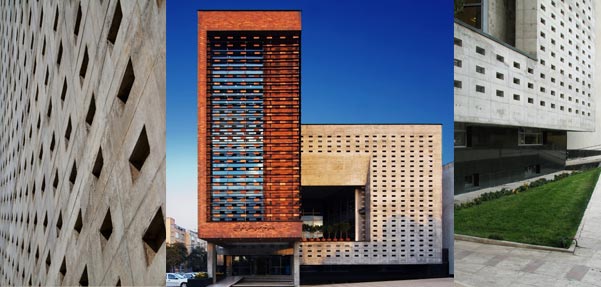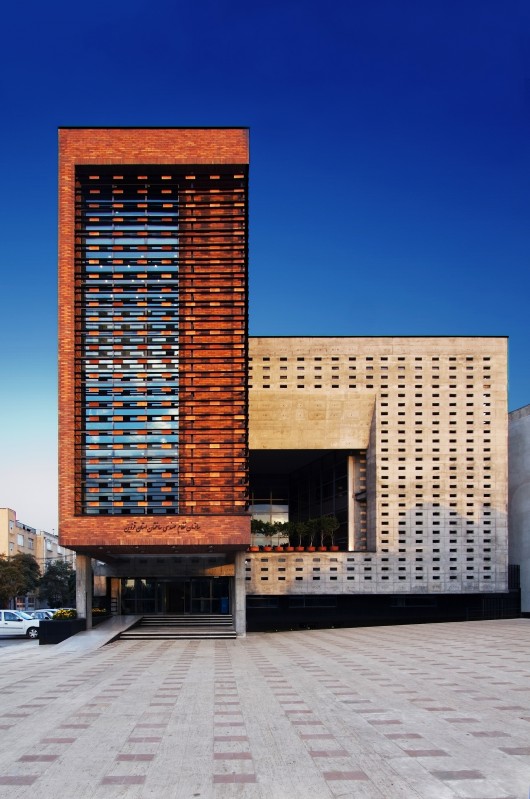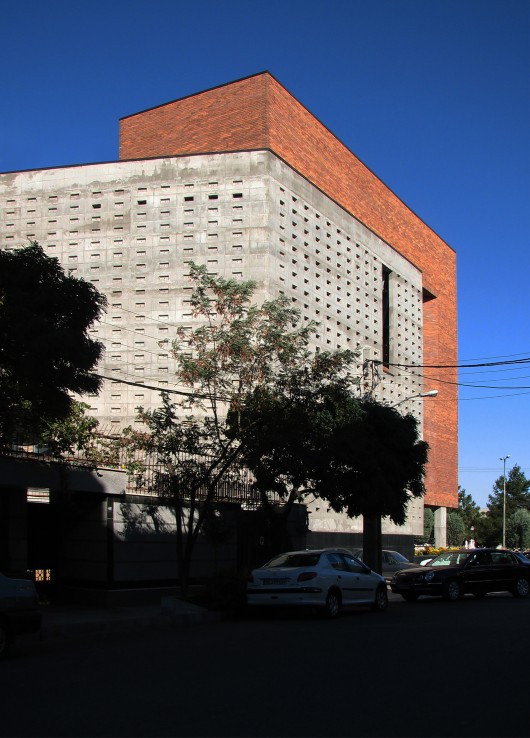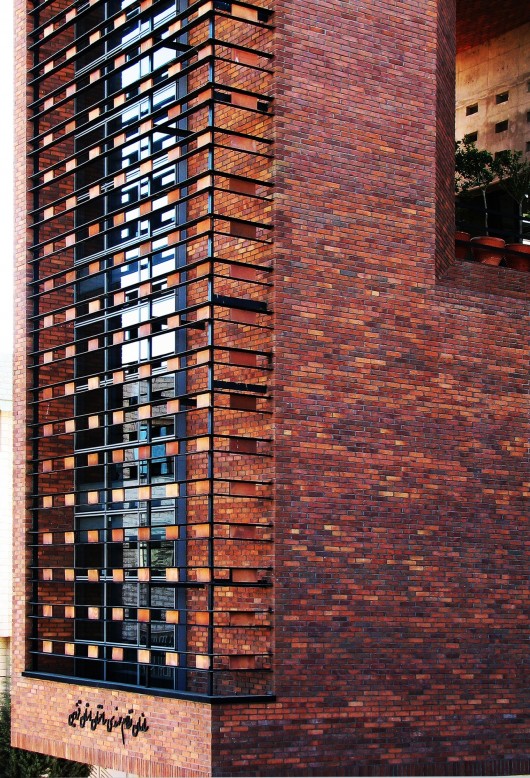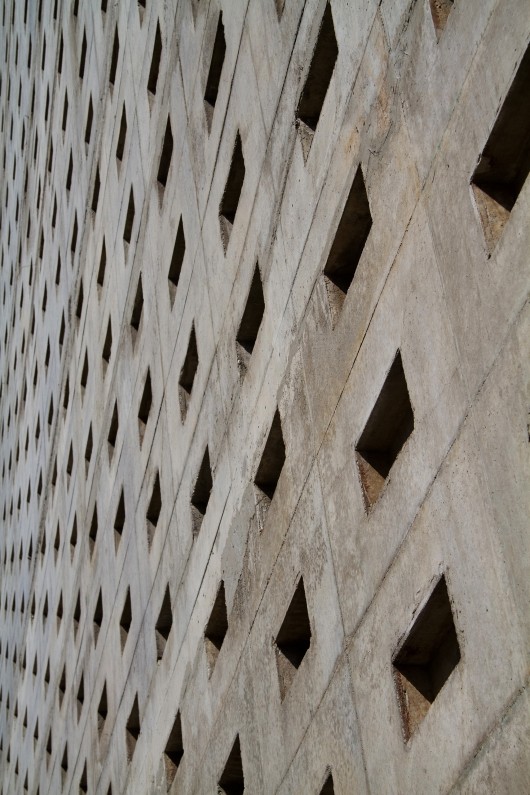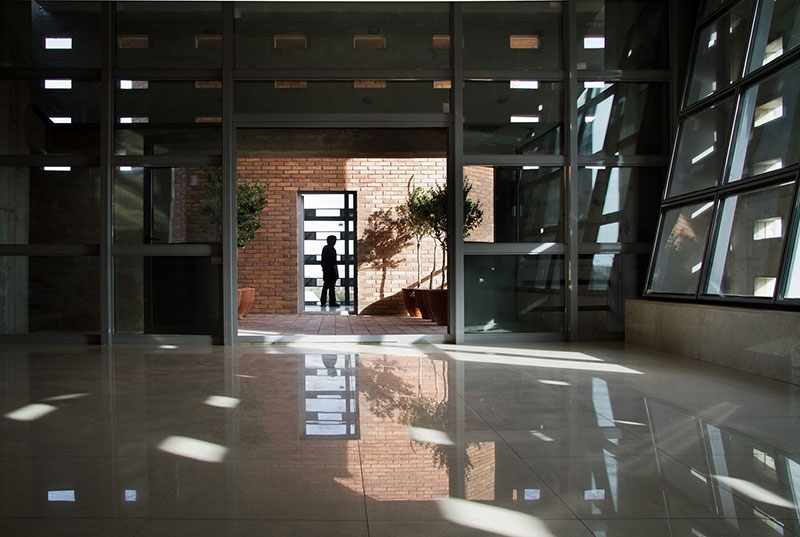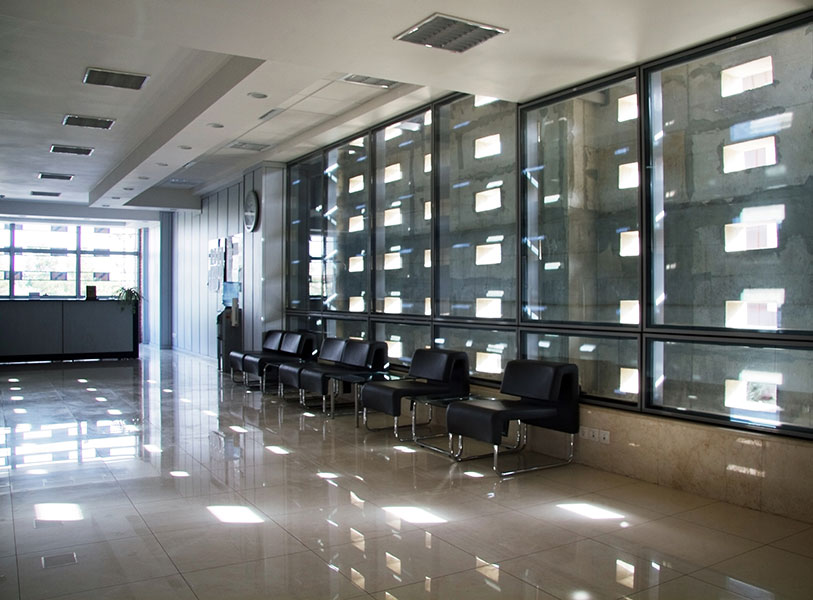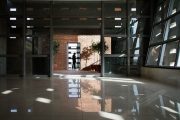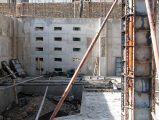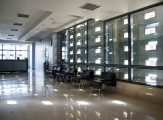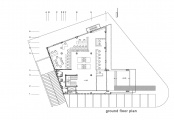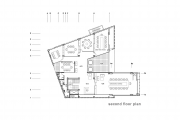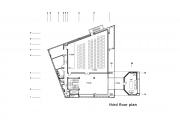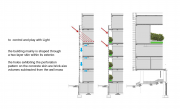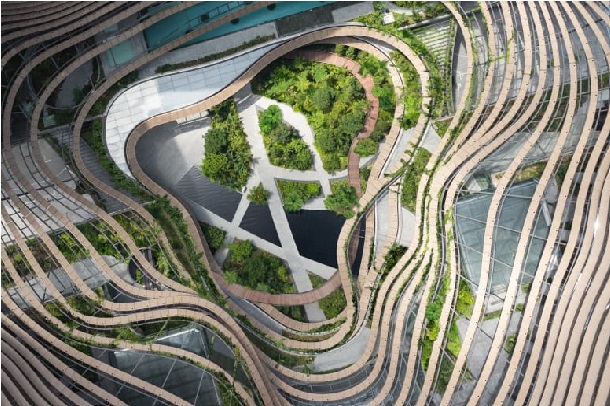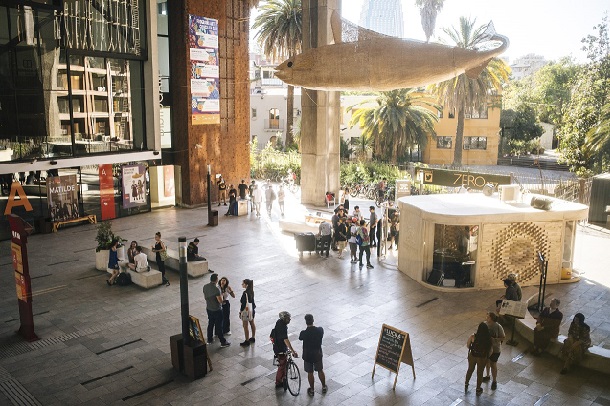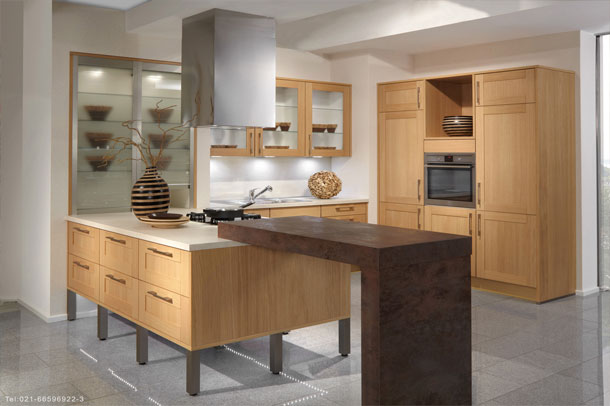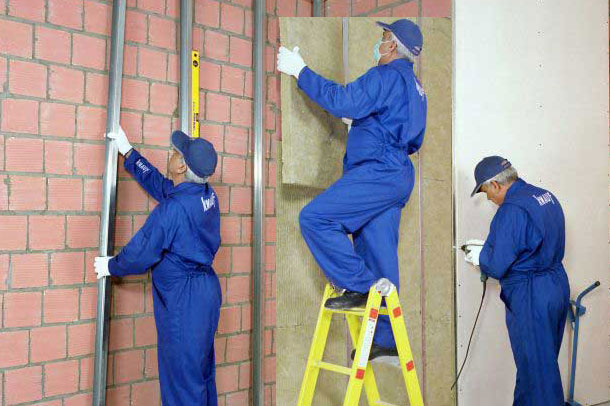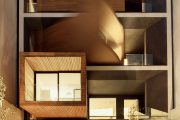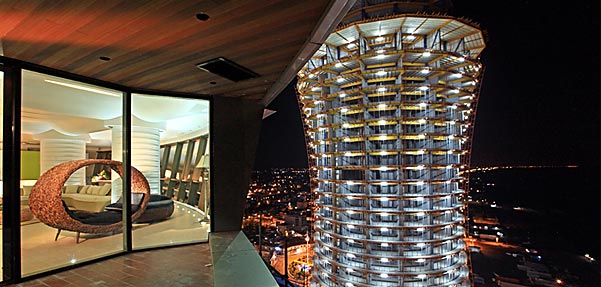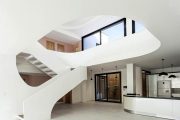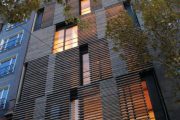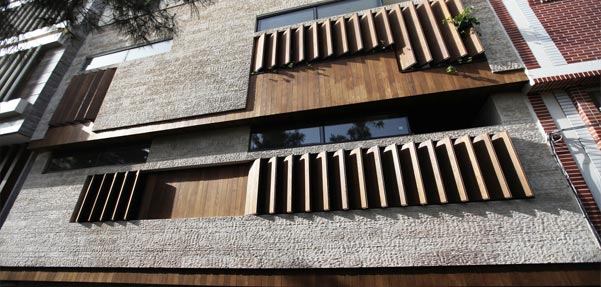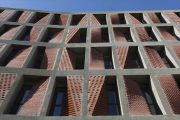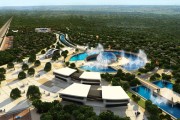این پروژه در زیربنای ۲۵۰۰ مترمربع اجرا شد و عملیات طراحی و ساخت آن در سال ۱۳۸۵ آغاز و در سال ۱۳۸۸ به اتمام رسید. ساختمان سازمان نظام مهندسی استان قزوین توسط دفتر معماری دیگر+دایا و با مدیریت پریسا علی محمدی و علیرضا تغابنی طراحی و اجرا شده است. این پروژه موفق شد تا در سال ۲۰۱۱ در بخش شهری در فهرست فینالیست های فستیوال جهانی معماری بارسلونا قرار گیرد.
این پروژه در زیربنای ۲۵۰۰ مترمربع اجرا شد و عملیات طراحی و ساخت آن در سال ۱۳۸۵ آغاز و در سال ۱۳۸۸ به اتمام رسید. طرح اولیه این پروژه در مسابقه ای که در سال ۱۳۸۵ از سوی سازمان نظام مهندسی ساختمان استان قزوین برگزار شد، رتبه نخست را کسب کرد.
ساختار اصلی این پروژه دو حلقه است که با هم ترکیب شده اند. این حلقه ها برداشتی انتزاعی از الگوی ساختمان های درونگرا و دارای حیاط مرکزی اند که در گذشته الگوی ساختمان های شهر قزوین بوده اند.
در این طرح حلقه هایی که در الگوی قدیم حیاط های مرکزی بناها را در نظامی افقی شکل می دادند، به صورت عمودی، در ارتفاع های مختلف و در ارتباط با فضاهای خارجی قرار گرفته اند. در عین حال، این ترکیب بندی عمودی به شکلی در سایت قرار گرفته که سطح باز شهر را پیش روی بنا قرار می دهد.حلقه آجری که کشیده تر و عمودی تر است، فضاهای مدیریتی بنا و حلقه ای بتنی، فضاهای اداری آن را در بر می گیرد. حلقه آجری که با زمین فاصله دارد، ایوان ورودی اصلی ساختمان را تعریف می کند.
در سازماندهی فضاهای داخلی، دو طبقه همکف و اول به ارباب رجوع اختصاص دارند و به همین دلیل وسیع و باز طراحی شده اند.طبقه دوم که به جلسات کارشناسان، مشاوران تخصصی و هیئت مدیره سازمان اختصاص یافته، با استفاده از جداکننده های شفاف به صورت نیمه باز طراحی شده و سرانجام، طبقه سوم را سالن گردهمایی و فضاهای جنبی آن اشغال کرده است. ساختمان به صورت دو پوسته طراحی شده است و حفره های موجود در پوسته بتنی بیانگر حجم های کسر شده از جداره با تناسبات آجری اند. با بکارگیری نظامی منطقی و شبکه ای، سوراخ های روی نما چنان جانمایی شده اند که شخصیت نظام مند، علمی و مهندسی مجموعه نمایان شود.
معماران: Dayastudio، Nextoffice
lموقعیت: قزوین، ایران
معماران : پریسا علی محمدی، علیرضا تغابنی
مساحت: ۲۵۰۰٫۰ متر مربع
سال: ۲۰۰۹
عکس: پرهام تقی اف
همکاران: منیژه ثانی، فریده آقامحمدی
پیمانکاران سازه: شرکت جاوید راه
مدیر ساخت و ساز: حبیب الله بابایی
مشاوران مکانیک: عبدالعلی زارع پور، هوفار اسماعیلی
مشاور برق: رضا حبیب
مدل سه بعدی : روح الله رسولی
فیلم: مرکز عکس ایران
عکس های بیشتر :
English version :
Dayastudio, Nextoffice Location: Qazvin, Iran Architects In Charge: Parisa Alimohammadi, Alireza Taghaboni Area: 2500.0 sqm Year: 2009 Photographs: Parham Taghioff Finishing Drawing Collaborators: Manizheh Sani, Farideh Aghamohammadi Structural Consultant: Vahid Gharejhani nia Structural Contractors: Javid Rah Co. (Hosein Zarabadi), Abdolvahid Meimoezzi Construction Manager: Habibollah Babaee Finishing Manager: Ali Eftekhari Mechanical Consultants: Abdolali Zarepour, Houfar Esmaeili Electrical Consultant: Reza Habib 3 D Modeling: Roohollah Rasooli Film: Persia Photo Center From the architect. The main forming idea of this project lies in the geometrical involvement of two square loops tied to each other. These loops are in fact an abstract version of introverted pattern taken from Qazvin vernacular architecture. Herein, the loops which earlier used to shape central court yards in a horizontal order are tied in a vertical manner for reaching different building levels and connecting the interior spaces to surrounding exterior. The building mainly is shaped through a two-layer skin within its exterior. The holes exhibiting the perforation pattern on the concrete skin are brick size volumes subtracted from the wall mass. Arraying holes were made intentionally to embed an engineering quality of rationalism and mathematical order standing for the organized, scientific and engineering characteristic of the building. By getting help from two loops, official functions got separated from management section: The first loop proposed to be made of brick and with a vertical stretch geometry was allocated to management section of the building while the second, was proposed to be made of concrete with a horizontal stretch geometry was allotted to official functions. Detachment of the brick loop and the ground level defines main entrance as an outstanding veranda. Alike the central court yard precursor, the loops have been designed to capture natural sunlight from the yard open space while the interior receives rays of lights through the perforated exterior wall. Finally, on designing the interior spaces, the moulds were installed on the auditorium walls; this was not only an interior object installation for decorative purposes or acoustic reason but also was a memento of construction engineering career to be kept in the Construction Engineering Organization’s building. Structure The structural system deployed in the project, includes shear walls for the exterior peripheral elements in combination with beam and column construction for the main skeleton of the building. The perforated shear walls employed here have been designed where the interest is focused on a mutual process: interior architecture needs and its qualities such as transparency and lightness; and facade considerations, itself determined by the characteristic properties of building components. Avoiding any possible damage in the construction of the perforated walls, specific concrete moulds were customized and manufactured so the mould removal process would be followed in an effective two steps method where the holes could be left completely pristine. As the mould customization would make it difficult to apply any vibrations to the concrete used, a certain type of concrete named as self consolidation concrete (SCC) was employed instead -that would harden solely due to its weight in the absences of any external mechanical forces.
منبع : archdaily

